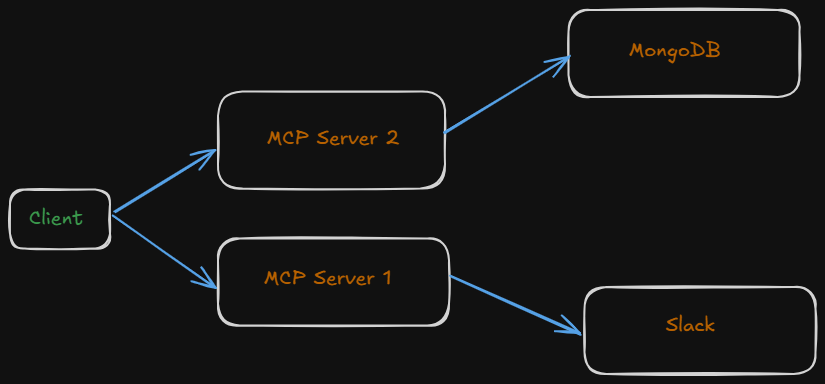The Future of AI is Here: Exploring the Model Context Protocol
 Subhradeep Basu
Subhradeep BasuImagine a world where your AI assistant isn’t just a tool but a smart partner that understands your needs in real time. Picture working on a project where data is scattered across emails, databases, and cloud storage. Usually, gathering and integrating this information is a slow and frustrating task.
Here, comes the Model Context Protocol (MCP)—a game-changer that makes this process seamless. MCP allows your AI to effortlessly connect to multiple data sources, pulling in relevant information while you work. No more switching between platforms or dealing with information gaps.
What is MCP?
Before diving into MCP servers, let’s understand the foundation: Model Context Protocol (MCP). Developed by Anthropic. MCP is an open-source protocol designed to enhance the functionality of generative AI applications by enabling them to interact with external systems.
“A new standard for connecting AI assistants to the systems where data lives, including content repositories, business tools, and development environments.“ - as Anthropic said in their article.
The Architecture of MCP
To understand MCP servers, we need to look at the three main components of the MCP ecosystem:
1. Hosts
These are generative AI applications that use large language models (LLMs) to perform tasks. Examples include tools like Claude Desktop.
2. Clients
Clients act as intermediaries that manage connections between hosts and servers. They facilitate communication and ensure smooth integration.
3. Servers
Servers are where the magic happens! They expose specific functionalities via the MCP protocol, enabling hosts to access resources (like files or APIs), tools (functions), and prompts (templates).
Pro Tip: Think of servers as "skill centers" for your AI model—they provide the knowledge and capabilities your model needs to perform tasks effectively.

This is a basic elaboration how a client can interact with multiple data sources, to get a local context of your works.
What Can MCP Servers Do?
MCP servers are incredibly versatile. Here are their three main capabilities:
1. Resources: Servers can provide file-like data that hosts can access. For example, they might retrieve API responses or database entries.
2. Tools: Servers offer callable functions that hosts can use to perform specific tasks. For instance, a server could provide a tool for calculating currency exchange rates.
3. Prompts: Pre-written templates or instructions can be provided by servers to guide users in completing tasks efficiently.
Build your own MCP Server
Step 1: Set Up Your Environment
Start by installing the necessary packages for creating an MCP server. You’ll need Python installed on your system along with libraries like mcp-server.
pip install mcp-server
Step 2: Write Your Server Code
Here’s a simple example of an MCP server that provides weather forecasts:
from fastmcp import FastMCP
# Initialize FastMCP server
mcp = FastMCP("weather")
@mcp.tool()
def get_forecast(location: str) -> str:
# Logic to fetch weather forecast
return f"The weather in {location} is sunny with a high of 25°C."
if __name__ == "__main__":
mcp.run()
This code defines a tool (get_forecast) exposed by the server that provides weather updates based on user input.
Though, the weather feature is hardcoded now but can be made working with just using weather api. (refer docs for more)
Step 3: Run Your Server
Run your server locally using Python:
python server.py
Your server is now live! You can connect it to an MCP client like Claude Desktop to test its functionality.
Why Should You Even Build an MCP Server?
Creating an MCP server isn’t just about coding—it’s about unlocking new possibilities for AI integration. Whether you’re a developer looking to experiment with cutting-edge technology or a business owner seeking custom solutions, building an MCP server gives you control over how AI interacts with external systems.
Conclusion: A New Era of Connected AI
The Model Context Protocol (MCP) represents a significant step towards a more connected and capable AI ecosystem. By providing a universal standard for integrating AI with external data sources, MCP promises to unlock new levels of intelligence and productivity. As more developers and organizations embrace MCP, we can expect to see a wave of innovative AI applications that are deeply integrated with the real world.
For more info: Docs
Subscribe to my newsletter
Read articles from Subhradeep Basu directly inside your inbox. Subscribe to the newsletter, and don't miss out.
Written by
